Disclaimer: As a Chewy and Amazon affiliate, I earn from qualifying purchases. This does not impact our reviews and comparisons.
Indoor cats tend to get less exercise.
Less exercise = less calories burned.
High protein wet cat food is the best choice for indoor cats. It’s less calorie dense, and better suits a cats dietary needs.
Here’s our 3 best indoor cat foods for top health:
BEST OVERALL 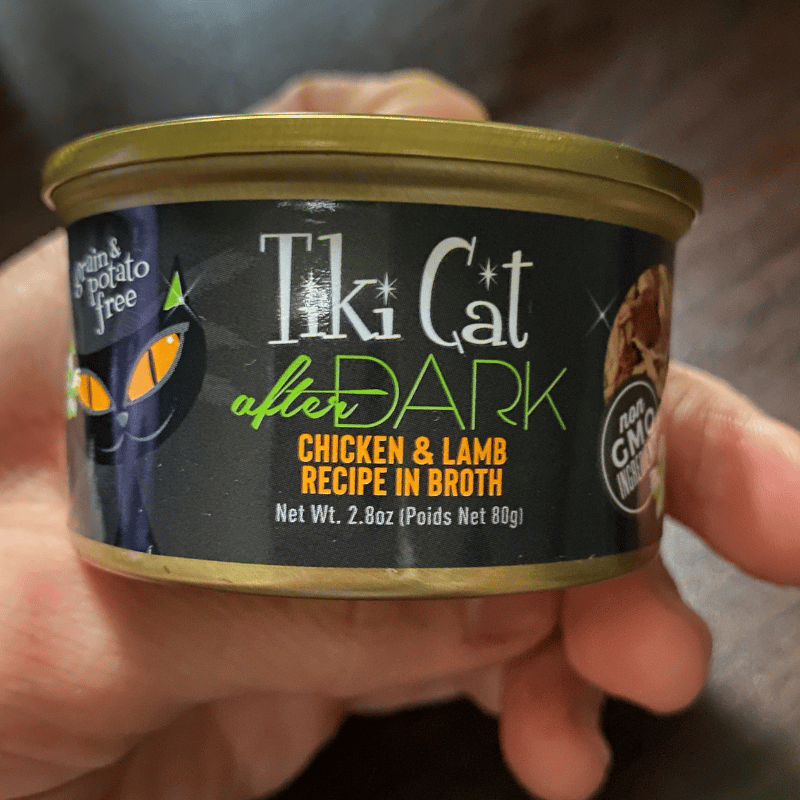 |
Tiki Cat After Dark
|
|
RUNNER UP 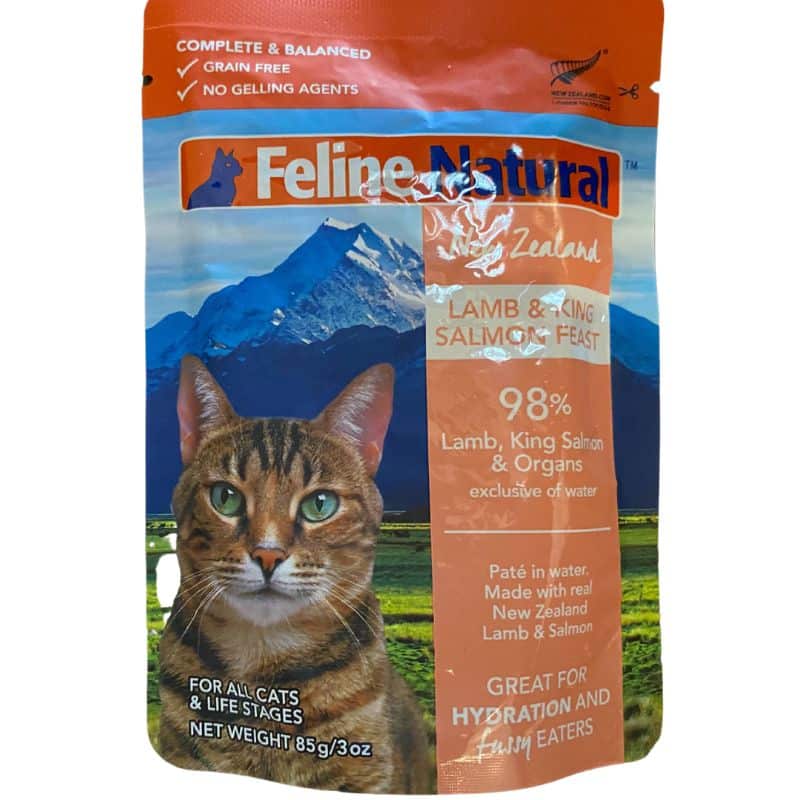 |
Feline Natural
|
|
BEST FOR PICKY CATS 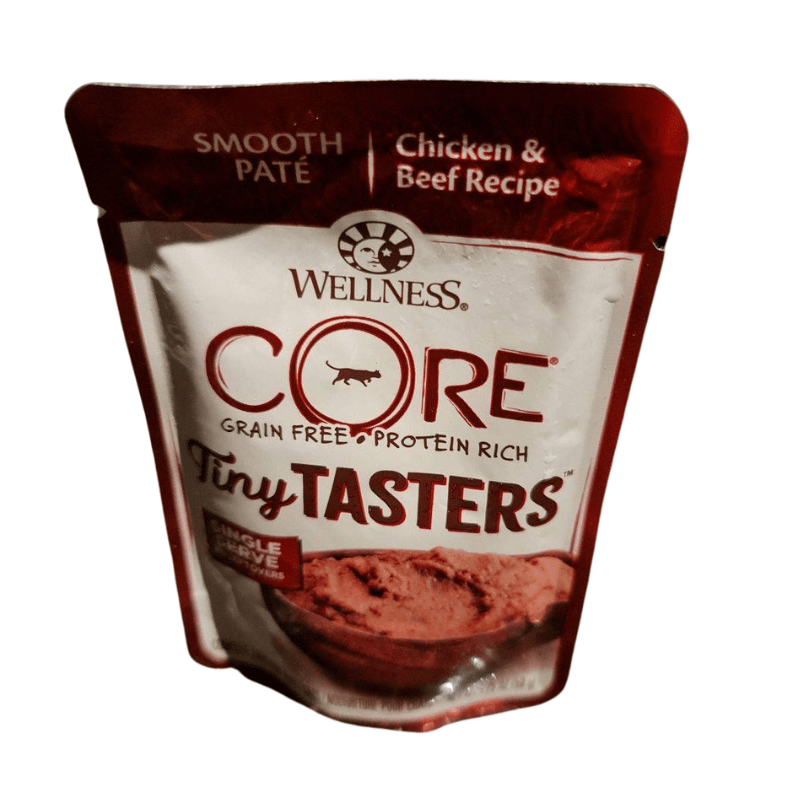 |
Wellness Core Tiny Tasters
|
Is your cat stuck inside all day?
For safety or logistical reasons, some cats can’t go outside.
But does this affect dietary needs? Well, no.
The term ‘indoor cat food’ is a marketing term, and doesn’t mean too much. Why would a cat not going outside need some special cat food?
They don’t.
What they do need (like most cats) is less calorie dense food. For this, wet cat food is the best choice.
In the rest of this article I’ll explain why I recommend the 3 above cat foods. I’ll also help you with a buying guide and help answer frequently asked questions on the topic.
I am not a veterinarian and I recommend seeking the advice of a vet for any further questions. The advice in this article is not intended as medical advice.
Here’s our best picks for indoor cats.
3 Best Indoor Cat Foods
I’ve based this list on cat foods I’ve tested with my cats and reviewed.
1. Tiki Cat After Dark
Best Indoor Cat Food Overall
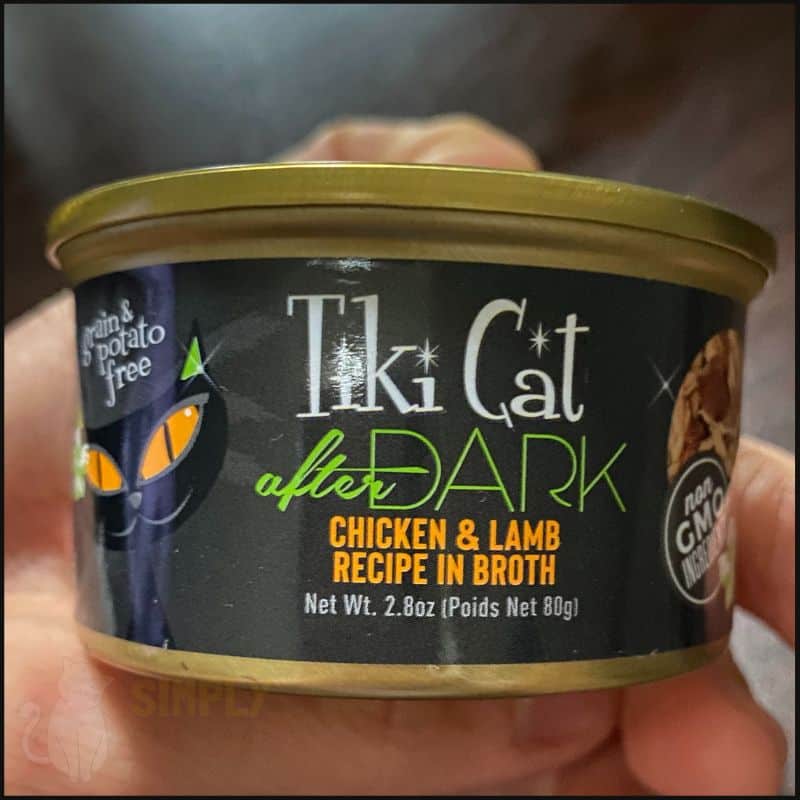
Pros and Cons
Summary
Tiki Cat After Dark is the most suitable food for indoor cats and weight control. It’s low in calories, high in protein and meets the needs for cats of all life stages.
Our cat enjoyed Tiki Cat when given a serve and we think your cat will enjoy it too.
On the other hand this cat food is pricey, so won’t suit everyone’s budget.
Nutrition (Dry Matter Basis)
- Protein: 78%
- Carbs: 0%
- Fat: 16%
- Ash: 7%
- Fiber: 0%
Read More: Tiki Cat After Dark Cat Food Review
2. Feline Natural
Best Indoor Cat Food Runner Up
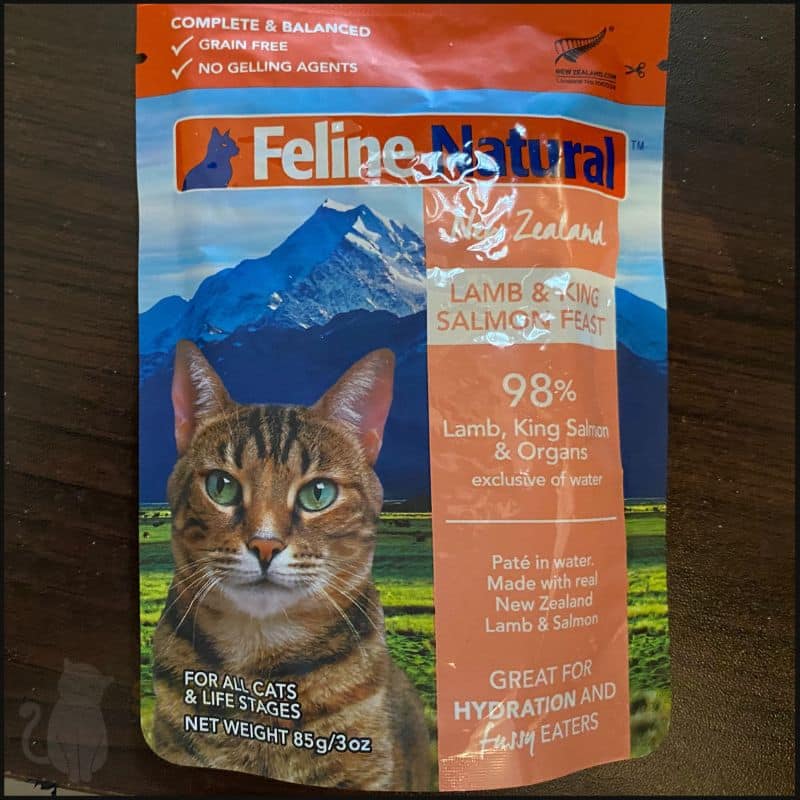
Pros and Cons
Summary
Feline Natural is another top tier choice for indoor cats. It’s packed with named animal foods, perfect for your carnivorous kitty.
It’s a complete meal for any cats. Kittens. Adults. Seniors.
Doesn’t matter. Feline Natural has you covered.
Whilst it is pricey, you get what you paid for. The main knock is the mixed taste results from fussy cats.
Nutrition (Dry Matter Basis)
- Protein: 52%
- Carbs: 2%
- Fat: 36%
- Ash: 10%
- Fiber: 1%
Read More: Feline Natural Cat Food Review
4. Wellness Core Tiny Tasters
Best Indoor Cat Food for Fussy Eaters
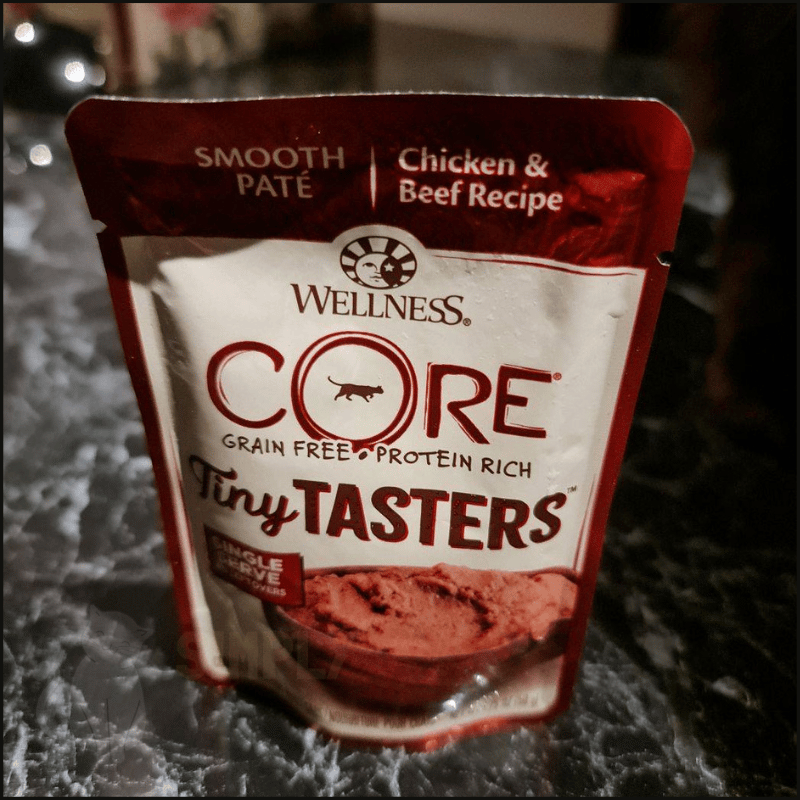
Pros and Cons
Summary
Wellness Core Tiny Tasters is my favorite choice for fussy cats. It is high in animal based foods and low in carbs, making it carnivore friendly.
There’s not much else to say here. Meaty rich. Tasty. Easy to serve pouch.
The main drawback is the price here. The product is only suited for adult cats, so you’ll have to look elsewhere if you’ve got a kitten.
Nutrition (Dry Matter Basis)
- Protein: 47%
- Carbs: 4%
- Fat: 39%
- Ash: 10%
- Fiber: 0%
Read More: Wellness Core Cat Food Review
How I Came up With This List?
Indoor cats tend to need fewer calories. I sorted my database of cat food based on calories/kg.
I excluded high carb options (>15% dry matter). Learn more about why low carb diets are best for cats in this guide.
Some of the lowest calorie choices contain tuna. You’ll want to be mindful of not overfeeding tuna due to the mercury content. Read more in my guide on tuna safety in cat food.
Also important is the calories per gram on a dry matter basis. This adjusts for moisture content.
Here’s my comparison table of best cat foods for indoor cats:
| Best Cat Food for Indoor Cats | Price | Texture | Lifestage | Protein* | Carbs | Fiber | Cal/kg | Cal/g* |
|---|---|---|---|---|---|---|---|---|
| Fussie Cat Tuna With Salmon Formula | $$ | Aspic | Adult | 64.7% | 0.0% | 2.9% | 612 | 3.6 |
| Tiki Cat After Dark Chicken | $$$ | Shreds | All | 77.7% | 0.1% | 0.0% | 751 | 4.1 |
| Sheba Perfect Portions Cuts | $$ | Gravy | Adult | 43.8% | 12.5% | 9.4% | 783 | 4.9 |
| Avo Derm Tuna & Crab | $ | Gravy | All | 55.6% | 11.1% | 5.6% | 829 | 4.6 |
| Royal Canin Kitten | $$$ | Pate | Growth | 55.0% | 9.0% | 10.5% | 894 | 4.5 |
| Feline Natural Chicken & Lamb Feast | $$$ | Pate | All | 51.5% | 2.1% | 0.5% | 895 | 4.6 |
| Tiny Tiger Chicken | $ | Gravy | All | 55.0% | 14.0% | 7.5% | 929 | 4.6 |
| Instinct Original | $ | Pate | All | 59.1% | 3.2% | 6.8% | 944 | 4.3 |
| Fancy Feast Savory Centers | $ | Pate | Adult | 45.0% | 1.0% | 7.5% | 966 | 4.8 |
| Halo Chicken Stew | $ | Stew | Adult | 43.9% | 7.8% | 7.3% | 1,025 | 5.0 |
| Meat Mates Lamb Dinner | $$$ | Pate | All | 41.7% | 1.7% | 3.9% | 1,084 | 6.0 |
| Sheba Perfect Portions Pate | $$ | Pate | Adult | 45.0% | 7.5% | 7.5% | 1,093 | 5.5 |
| Wellness Smooth Loaf Chicken | $$ | Pate | Adult | 47.7% | 2.6% | 4.5% | 1,116 | 5.1 |
| Tiki Baby Cat Chicken & Egg | $$$ | Shreds | All | 62.5% | 0.0% | 8.3% | 1175 | 4.9 |
| Blue Buffalo Freedom Indoor Cat Chicken | $ | Pate | Adult | 40.9% | 11.8% | 9.1% | 1,179 | 5.4 |
| Ziwi Peak Venison Recipe | $$$ | Pate | All | 54.2% | 10.4% | 4.2% | 1,200 | 5.0 |
| Purina Beyond Wild Salmon Recipe | $ | Pate | Adult | 40.9% | 13.6% | 6.8% | 1200 | 5.5 |
| Natural Balance Limited Ingredient Duck & Pea | $ | Pate | Adult | 40.9% | 7.7% | 9.1% | 1,220 | 5.5 |
| Hound & Gatos Duck & Liver | $$ | Pate | All | 45.5% | 0.0% | 4.5% | 1,222 | 5.6 |
| Nulo Freestyle Duck & Tuna | $ | Pate | All | 51.4% | 5.8% | 0.4% | 1,225 | 4.8 |
| Dave’s Naturally Healthy Turkey & Giblets | $ | Pate | Adult | 48.4% | 3.7% | 0.8% | 1245 | 5.5 |
| Ziwi Peak Otago Valley | $$$ | Pate | All | 44.9% | 4.1% | 4.1% | 1,250 | 5.1 |
| Wellness Core Tiny Tasters Duck | $$ | Pate | Adult | 46.7% | 3.7% | 0.4% | 1,291 | 5.3 |
| Purina Pro Plan Kitten Chicken & Liver Entree | $$ | Pate | Growth | 51.1% | 2.1% | 6.4% | 1,321 | 5.6 |
Buying Guide
Whilst our best picks are all suitable for indoor cats, you might want to find your own cat food.
Not to worry, this buying guide will help you with what you need.
What Food Do Indoor Cats Need?
Wet cat food.
This type of cat food is lower in calories compared to dry.
Indoor cats tend to get less exercise and burn fewer calories. They can gain weight faster than outdoor cats.
This also depends on your environment. If you have more toys your cat can stay active.
Cats also eat when bored. Yep, that wall isn’t that exciting for your cat either.
So if you’ve got a boring home with nothing to do and too much food, expect a fat cat.
There’s a decreased risk of obesity feeding canned cat food.
Human-grade raw meat, organ, and bones are also protective against weight gain.
Lower cost pet food is one factor in increasing the risk of obesity in indoor cats. Free choice feeding also increases the risk of weight gain.
To summarize:
A wet cat food or raw cat food diet is best for indoor cats. Less calories. More protective against weight gain.
What Is the Difference Between Cat Food and Indoor Cat Food?
There’s no laws or guidelines over what indoor cat food means.
It’s a marketing strategy that brands use to differentiate. Most indoor cat foods are dry.
In short:
The word doesn’t mean anything.
Instead, look for:
- Wet cat food
- Lower caloric density foods (kcal/kg)
This is what’s most important for indoor cats.
Should Indoor Cats Be Grain Free?
Grains are a high in carbs. Cats are less able to digest excess carbs.
Limit your cats carb intake to <12% (dry matter). This helps control blood sugar and reduces diarrhea.
Whilst grain-free helps lower carbs, there are other high carb foods to be mindful of.
This includes:
- Lentils
- Peas
- Potatoes
- Tapioca starch
Often, cat food brands will say ‘grain-free’ but load up with other high carb foods. Sneaky.
Be weary of the label and always check the ingredients.
What Should I Look for When Buying Food for an Indoor Cat?
Two things:
- Wet cat food
- Caloric density (kcal/kg)
Those are the two most important criteria for indoor cats.
But those aren’t the only things…
You’ll also want cat food that’s nutritionally balanced.
Things to check…
Calories
Check the back of the cat food label.
You’ll see info on calorie content. Look for the kcal/kg.
This helps you compare cat foods at a glance. Lower calories/kg = less calorie dense.
Here’s a pic:
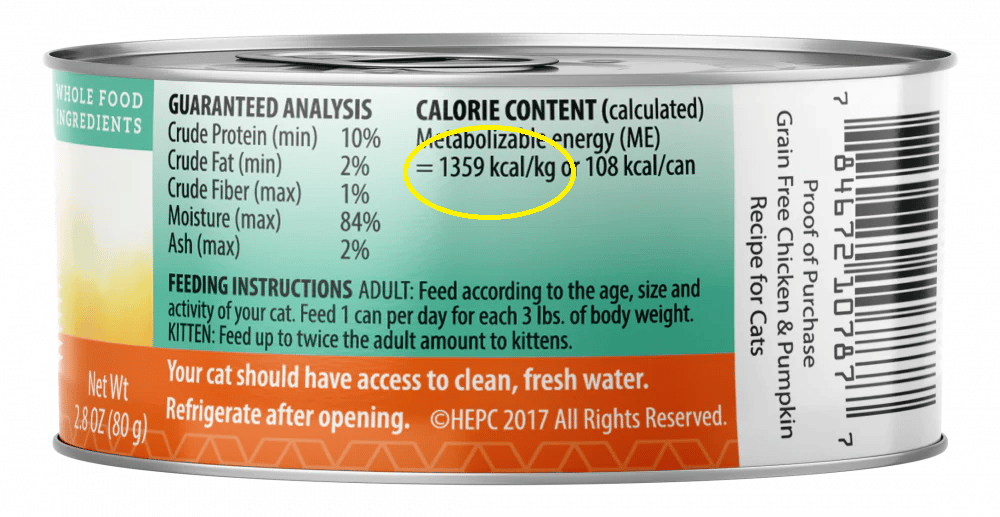
Remember that it’s the total calories that matter.
Most cats need about 300kcal per day, with indoor cats needing less in general.
Use an online calculator to find out the exact amount you need.
As long as the total calories are in line with what your cat needs, it will work.
Protein
Protein is less calorie dense than fat and more valuable to a cat’s body than carbs.
When given a choice, cats prefer high protein diets (50% dry matter).
Cats are carnivores. They evolved off high protein diets from prey.
Keep the protein up for your cats enjoyment.
Learn More:
Fat
Fat is the most calorie dense nutrient.
It makes sense to look for a lower fat food.
However, cats do need some fat in their diet.
A low fat diet may result in food rejection (<25% dry matter).
Be weary of choosing cat food too low in fat to make sure your cat is happy.
Fiber
Many indoor cat foods contain extra fiber. Is this helpful for indoor cats?
No.
Fiber doesn’t benefit cats like humans. They have a less distensible gut, sensitive to gas.
It’s worth noting that animal based foods technically have fiber in the form of animal derived fermentable substrates (ADFS). Any purported fiber benefits aren’t limited to plant based sources.
Frequently Asked Questions
Do Indoor Cats Need Special Food?
No.
Indoor cats need a nutritionally balanced diet and fewer calories. Wet cat food is the lowest calorie choice and best for indoor cats.
What Is the Healthiest Cat Food for an Indoor Cat?
We recommend Tiki Cat After Dark.
It is low in calories and high in protein. This cat food is also a complete meal for all life stages per AAFCO’s nutrition guidelines.
Great stuff!
How Often Should You Feed an Indoor Cat?
In the wild, cats eat 7-20 times.
So there’s no rules. Just made up rules.
What matters most is not free-feeding. This increases the risk of weight gain.
Always go with set meal times. 3-6 meals is probably best.
Do Indoor Cats Need Less Food?
In general, yes.
Indoor cats tend to exercise less than outdoor cats.
Less exercise = less calories burned.
How Much Should an Indoor Cat Eat per Day?
An indoor house cat needs 40-66 kcal/kg body weight per day.
The optimal amount depends on many factors including:
- Age
- Neutering
- Body condition
- Gender
- Activity
Use an online calculator for more precision.
Learn More:
How Much Should My Cat Weigh?
Use the body condition score (BCS). A healthy cat is a 5 on the scale.
Since different breeds have different lengths it’s hard to get an ‘ideal weight’ that suits all.
That’s where the BCS helps.
Cats should not carry too much fat.
More than half of US pets are overweight or obese based on the BCS. Obesity predisposes cats to a higher mortality rate from:
- Diabetes
- Hyperlipidemia
- Mobility disorders
- Urinary tract infections
Learn More:
- Body Condition Score (for checking your cats weight)
- How to Dechonk Your Cat
Conclusion
Indoor cats tend to get less activity. This decreases calorie needs and increases risk of weight gain.
The best type of cat food for indoor cats is a wet food. Wet cat food is less calorie dense than dry.
The term indoor cat food doesn’t follow any laws. It’s best ignored when choosing a food for your indoor cat.
Use an online calculator and body condition score. This helps you find out how much to feed your cat for top health.
